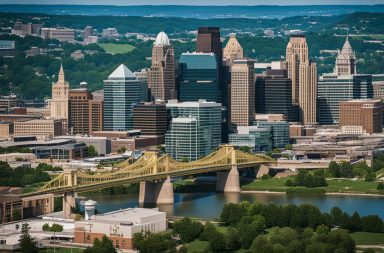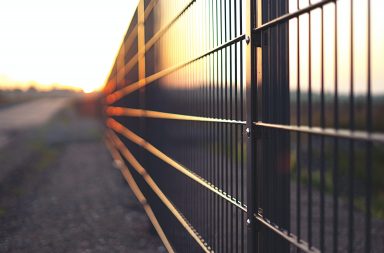In recent years, the demand for lightweight, strong, and corrosion-resistant materials has led to the widespread use of Fiberglass Reinforced Plastic (FRP) across various industries. The material has revolutionized industries with its extraordinary qualities and limitless versatility, making it stand out in the dynamic environment of contemporary production. This article will delve into the FRP manufacturing industry, examining its numerous uses, beneficial qualities, and the crucial role FRP producers play in satisfying the constantly expanding market demands.

Understanding Fiberglass Reinforced Plastic (FRP) and its Advantages
FRP is a cutting-edge composite material combining a polymer matrix with strong glass fibers. The union of these elements produces a material with an exceptional strength-to-weight ratio, excellent corrosion resistance, and superior mechanical properties. FRP’s versatility in different shapes and sizes makes it a desirable option for producers who want to develop products with complicated designs and complex geometries.
Due to these advantages, FRP is in high demand across many industries, leaving its imprint on marine, construction, aerospace, and many other fields. Its lightweight but strong nature makes it the perfect material to build corrosion-resistant panels for buildings and create fuel-efficient cars in the automotive industry. From saltwater-resistant boats to aerospace components, FRP has weaved into the fabric of contemporary innovation, advancing sectors toward a future of resilience and efficiency.
The Booming FRP Market and Industry
The FRP market has had impressive growth over the past ten years, and this upward trend is anticipated to continue for the foreseeable future. The market is growing as a result of several factors. They include; increased infrastructure development investments, the expanding automotive and aerospace industries, and rising demand for corrosion-resistant materials in harsh environments.
FRP producers serve diverse applications producing items like pipes, tanks, gratings, panels, and specialized goods for various uses. Their pivotal role lies in offering technical FRP solutions to multiple end users and sectors, each with unique needs and requirements. As the need for lightweight, strong, and adaptable materials rises across industries, the FRP market is expected to maintain its outstanding growth trajectory.

The Process of FRP Manufacturing
Armed with their specialist knowledge and state-of-the-art facilities, the manufacturers are at the forefront of producing premium FRP materials in various forms.
The complex process of manufacturing FRP encompasses crucial stages starting with careful material selection to ensure the best performance and quality. This is followed by precise fiber impregnation, where the glass fibers are delicately woven into the polymer matrix, strengthening the structural integrity.
Lastly, the composite material undergoes the curing process, which results in durable and adaptable FRP products cherished throughout industries. Through their skill and commitment, FRP producers enable advancements propelling the world towards a future anchored in strength and innovation.
Challenges in FRP Manufacturing
Although the Fiberglass Reinforced Plastic business holds great promise, it also comes with several challenges that FRP producers must overcome to succeed in this cutthroat market.
Finding raw materials, especially high-quality glass fibers, and resins, is a big challenge. These components are essential for creating robust and dependable FRP products. Ensuring a steady and reliable supply of these materials while maintaining cost effectiveness remains a constant concern for an FRP manufacturer. Strong supply chain management methods are required because variations in raw material prices and availability can impact production timelines and overall costs.
Additionally, the production process for FRP must adhere to strict safety and environmental regulations. Working with chemicals and other potentially harmful products to safeguard employees and the environment makes it imperative to follow safety regulations. A safe working environment, careful chemical handling, and rigorous attention to safety procedures are necessary to avoid accidents and occupational hazards.
Moreover, FRP producers must adhere to strict environmental laws to reduce their activities’ adverse environmental effects. Maintaining eco-friendly FRP manufacturing requires good waste management, recycling techniques, and lowering emissions and contaminants.

Innovations in FRP Manufacturing
To stay ahead in a brutally competitive market, an FRP manufacturer should constantly push the bounds of innovation, embracing cutting-edge processes and technologies. Some innovations altering FRP production include automated fiber placement, resin transfer molding, and pultrusion.
Automated fiber placement uses accurate robotic devices to lay down fibers with minimal waste and maximum strength. Resin transfer molding revolutionizes the process by pouring liquid resin into molds, assuring thorough and uniform impregnation of fibers, and producing superior composite products.
Meanwhile, pultrusion excels at continuous manufacturing, pulling fibers through a resin bath and a shaped die, crafting FRP materials of consistent cross-sections. These innovative manufacturing techniques have shortened the process, lowering costs while producing goods with unmatched consistency, durability, and performance.
In addition, Research and development efforts have been concentrated on creating ecologically friendly FRP solutions, creating sustainable resins and fibers, and minimizing the industry’s ecological footprint.
Emerging Applications for FRP
Exciting new opportunities are opening up for Fiberglass Reinforced Plastic (FRP) with emerging applications as technology and materials science advance. In the field of renewable energy, FRP takes center stage, shaping the future of sustainable power generation. Wind turbine blades made from FRP provide an exceptional balance of strength and lightweight, effectively capturing clean, renewable energy from the wind. This innovative use of renewable energy helps protect the environment and paves the path for increased energy efficiency worldwide.
Furthermore, the medical sector is studying the use of FRP in creating cutting-edge medical gadgets and prostheses, embracing its potential. From prosthetic limbs that provide comfort and mobility to advanced medical equipment revolutionizing healthcare FRP demonstrates its adaptability and versatility. As these new applications are investigated and improved, FRP’s range of potential horizons grows.
Wrapping Up
The business of manufacturing Fiberglass Reinforced Plastic (FRP) has developed into a booming, dynamic industry with extensive uses in numerous industries. Many FRP producers favor it due to its various benefits, which include its high strength-to-weight ratio, corrosion resistance, and flexibility. As the world embraces sustainability and looks for long-lasting, environmentally friendly solutions, the market for FRP is anticipated to rise.


